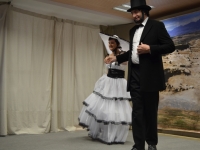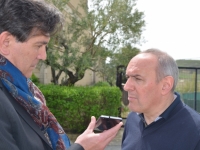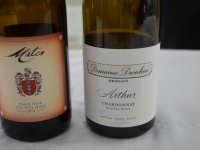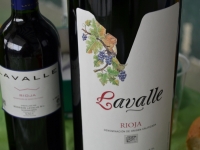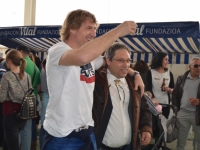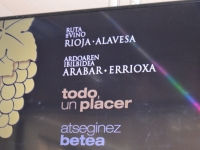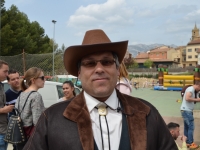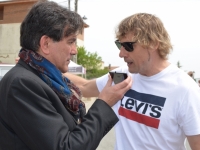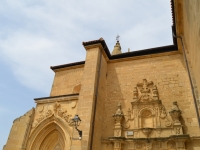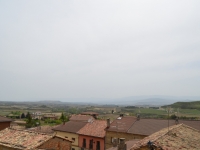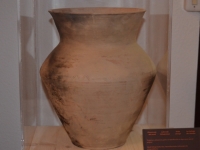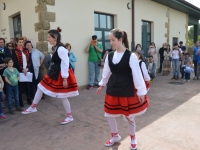Travel
Californian wines marry with Rioja Alavesa
VI Historical Fair of Wine in Navaridas
USPA NEWS -
Californian wines were protagonists this weekend of the 6th Historical Wine Fair in Navaridas, a small Basque village located in the Rioja Alavesa wine area. For three days, the American wines were twinned with the wines of Navaridas in a weekend dedicated to the United States.
Navaridas is a small town in the south of the Basque Country, bordering on La Rioja and, like this one, producer of wine. With just 230 inhabitants, Navaridas seeks to promote itself and strengthen its economy, totally dependent on wine. The project 'Historical Wine Fair' tries to "reflect the culture of wine, its history over the centuries and what it represents for different peoples," as explained by the town council. The first edition of the fair was held in 2013 and was dedicated to classical Greece. The second, to the wines of Israel and Lebanon. France starred in the third edition of this fair, while the fourth was dedicated to Germany. The wines of Argentina were protagonists of the fifth edition, celebrated in 2017. And this year, the wines of Navaridas have been twinned with the wines of California, in the United States. "We were missing California," the mayor of Navaridas, Miguel Angel Fernandez, told USPA News. "And the truth is that it has been a success."
Navaridas, according to its mayor, hopes with this fair "that their wines are known, that their people are known, that their heritage is known and that their history is known." The town, located in the Ebro river valley, the largest in Spain, has inhabitants from 360,000 years b.C. An Interpretation Center explains to the visitor the archaeological remains found in the area. Although the name of Navaridas is not documented until the fourteenth century of our era as an outlying dependent on the neighbor Labastida. It was not until the 17th century that Navaridas gained its independence and was recognized as a town. Today it belongs to the Basque Country and tries to make itself known to attract tourists.
"We are looking for a different economic alternative," explains Mayor Miguel Angel Fernandez, "that can give young people a way out, that the town can take hold and give life because, if not, the town dies." In the same vein, in statements to USPA News, Ramiro Gonzalez, deputy general of Alava, for whom these fairs "are very important to attract people to the towns of the territory. Especially small towns like Navaridas. The fairs give the possibility of people coming, know them and, if they like it, come back." He adds: "Already today, if we take a walk through the great hotels of Rioja Alavesa we will see many British and even American visitors. That means that, little by little, the region is gaining notoriety."
In order to gain notoriety, the 6th Navaridas Wine Historic Fair named a Californian, star of Spanish television and descendant of Basques, sponsor of the event: the presenter Julian Iantzi. "Small towns have their charm, their history, their possibilities," he says. The presenter was the star of the fair, which began with a speech by President Lincoln glossing the virtues of California wines.
A state that constitutes the main producer of wine in the United States. The history of wine in American territory goes back to the sixteenth century. The first wine made in the United States was made with native vines in Florida, between 1562 and 1564. Vitis Lambrusca, Vitis Riparia, Vitis Vulpina and Vitis Amurensis, originating in the North of the Americas, added the European variety Vitis Vinifera. The crossing of this European variety with the american Vitis Lambrusca gave rise to the variety of Alexander hybrid grape, which was exploited commercially at the beginning of the 19th century. The first winery company born in the United States was established in Cincinnati, Ohio, in the mid-1830s.
The history of American wine can not be understood without the participation of a large number of adventurers and entrepreneurs, all of them immigrants. William Penn was a real estate philosopher and entrepreneur who was born in England in 1644. His family acquired a vast territory west and south of New Jersey that King Charles II granted him in payment of the debts of the English Crown to the family. Penn called that territory "Sylvania", but the king changed the name to "Pennsylvania" in honor of the deceased admiral. William Penn was the founder of the city of Philadelphia and one of the main inspirers of the Constitution of the United States.
The Spanish missionary Fray Junipero Serra was born on the island of Mallorca, in the Spanish Mediterranean, in 1713. He traveled to the Viceroyalty of New Spain, the name of present-day Mexico, arriving in Puerto Rico, Mexico City, Queretaro and California. On July 16, 1769, he founded the mission of San Diego de Alcala and planted the first vineyard in California.
The Frenchman Jean Louis Vignes was born in 1780 near Bordeaux. Half a century later he arrived in Monterrey and settled in the area of what is now Los Angeles. There he began to make wine of the monacal varieties that Fray Junipero Serra had planted, but he soon imported the Cabernet and Sauvignon Blanc varieties from France, becoming the first Californian who produced quality wines and worked on the aging of wines.
This weekend, quality Californian wines traveled to Navaridas to pair with local wines in a tasting led by a well-known Basque sommelier. Throughout this year, the wines of California will be protagonists of the Basque cuisine in Navaridas, a town that, through wine and activities such as the Historical Fair, tries to make itself known on the map of the wine regions of Spain. Six wineries participated in the event, although the town has some more. An old town, well preserved, clean and inhabited by friendly people who receive the tourist with affection. A place to visit.
Liability for this article lies with the author, who also holds the copyright. Editorial content from USPA may be quoted on other websites as long as the quote comprises no more than 5% of the entire text, is marked as such and the source is named (via hyperlink).

